Miasteczko Śląskie- Silesian 作者: 来源: 发布时间:2021-10-27
Ⅰ. Population and Area
Population (2019-06-30)
• Total 7,437
• Density 110/km2 (280/sq mi)
Area
• Total 67.83 km2 (26.19 sq mi)
Website http://www.miasteczko-slaskie.pl
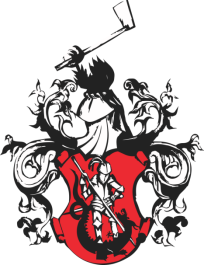
Ⅱ.Natural Geography (environment and resources)
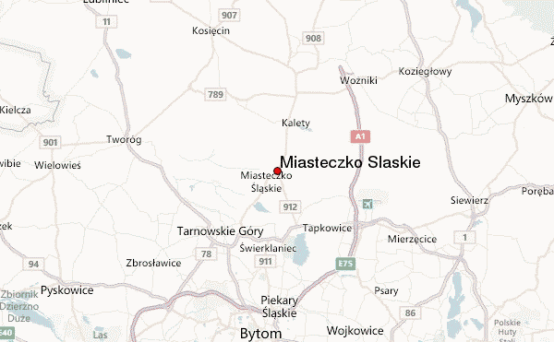
-Miasteczko Śląskie is located at the northern end of the Upper Silesian Industrial District.
-The city is historically located in Upper Silesia.
-According to data from 1 January 2010, the area of the city was 67.83 km².
-In Miasteczko Śląskie, there are three auxiliary units of the commune : Żyglin-Żyglinek district and Brynica and Bibiela villages.
-Transport
-Road transport
-Two voivodeship roads run through the city:
-provincial road No. 912 Świerklaniec - Miasteczko Śląskie, junction Żyglina with DK 78
-provincial road No. 908 Tarnowskie Góry - Częstochowa
-Highway A1
-Railroad
- This topic is related to the category: Stations and railway stops in Miasteczko Śląskie .
-From Miasteczko Śląskie, you can get to Katowice, Lubliniec and Wieluń , because it is located on the Lubliniec - Katowice railway route. There is a train station in the city where passenger trains stop. One of the largest railway junctions in Europe begins within the city limits - the Tarnowskie Góry marshalling yard.
Ⅲ.Economy
-The largest industrial plant is Huta Cynku in Miasteczko Śląskie, a modern metallurgical plant, the construction of which was based on a license from the English company Imperial Smelting Processes from Bristol. The processing is carried out using the shaft furnace method, which allows obtaining zinc and leading in one process line. The technological line includes: Faculty of Sintering and Sulfuric Acid, Faculty of Shaft Furnace and Faculty of Lead Refinery. The "Miasteczko Śląskie" zinc smelter was one of the major sources of air pollutant emissions in the northern part of the Katowice Province in the 1970s and 1980s.
-The pro-ecological program undertaken in the early 1990s assumed the liquidation of the most worn-out departments, the construction of new dedusting devices and the modernization of the old ones. This led to a reduction in heavy metal emissions while increasing production. Currently, the level of cadmium and lead emissions does not exceed the permissible standards, and the newly built Zinc Refining Department produces the highest quality zinc. The current pro-ecological activities concern the protection of the earth's surface and waste management.
-Economic changes
-From the 16th century, Miasteczko Śląskie was an area of developing ore and iron ore mining. In 1562, the town was granted the privileges of a free mining town, and the miners employed there were granted a "mining order". Over the centuries, the economic fate of the city was different, depending mainly on the mining of ores. Ultimately, the operation ended on June 17, 1917. On that day, the mine in Pasieki was flooded.
-In 1963, the construction of a zinc smelter began. A housing estate for 2,500 inhabitants, a new school, kindergarten, a modern health center and a network of service facilities were built. Until the end of the seventies of the twentieth century, the smelter was expanded, but its harmful impact on the environment resulted in the imposition of a protection zone on a large area of Miasteczko Śląskie, Żyglin and Żyglinek, causing stagnation in economic development. It was only the socio-economic transformations at the beginning of the 1990s that created the conditions for the development of entrepreneurship in the commune.
-The Zinc Steelworks liquidated the most onerous departments and intensified production, introducing modern technological processes, thus almost completely eliminating its harmful effects. Several companies were established in the area of the liquidated steelworks facilities. Several hundred service and commercial companies have also been established in the commune, and their number is constantly growing.
-Miasteczko Śląskie - Wikipedia, the free encyclopedia https://pl.wikipedia.org/wiki/Miasteczko_%C5%9Al%C4%85skie#Gospodarka
Ⅳ.Industrial Characteristics
-The largest factory in the town is the Miasteczko Śląskie Zinc Smelter. This metallurgical plant was originally built under license for the British company Imperial Smelting Processes of Bristol. Now a modern plant, ore processing is carried out in a continuous process, producing both zinc and lead. The complex comprises: a sintering plant, a sulphuric acid plant, a rotary furnace, and a lead refinery.
-During the 1970s and 1980s, the smelter was a major source of atmospheric emissions of lead and other heavy metals in the northern part of the Katowice Voivodeship. In the early 1990s, several sections of the plant were closed, and modern abatement equipment was installed on the sections left working. This led to the net reduction of heavy metal emissions to air.
-Miasteczko Śląskie - Wikipedia https://en.wikipedia.org/wiki/Miasteczko_%C5%9Al%C4%85skie
-Key projects
-1. Veolia Południe informs about further stages of the construction of the heat network in Miasteczko Śląskie. Therefore, difficulties in road transport may appear in the near future.
-Below are the stages of work and the places where the work will be carried out.
-Stage 2a part 1 on dates:
-a) Network
-Modrzewskiego Street - from October 21 to November 11 divided into three stages
-Stage 2a part 3 on time
-a) Network III
-https://Expansion of the heat network in Miasteczko Śląskie 12 October 2020 , added by: MKmiasteczko-slaskie.pl/aktualnosci/157/rozbudowa-sieci-cieplnej-w-miasteczku-slaskim
-2. Update of the "Low Emission Reduction Program for the Miasteczko Śląskie Commune"
-Announcement Mayor of the City of Silesia
-Based on Article. 17 sec. 4 of the Act of 27 April 2001 Environmental Protection Law (ie Journal of Laws of 2020, item 1219) and Art. 30 and art. 39 of the Act of 3 October 2008 on the provision of information on the environment and its protection, public participation in environmental protection and on environmental impact assessments (i.e. Journal of Laws 2020, item 283, as amended), I inform about joining development of the draft document entitled: "Update of the Low Emission Reduction Program for the commune of Miasteczko Śląskie".
-The aim of the "Program ..." is to present guidelines for rational program activities for the following years to improve the air condition of the Miasteczko Śląskie Commune by reducing the impact of low emissions.
-The draft document is available at: the Town Hall in Miasteczko Śląskie, ul. Rynek 8, room 28, from Monday to Friday during office hours and on the website: https://miasteczko-slaskie.pl/.
Ⅴ.Attrations and Cityscape
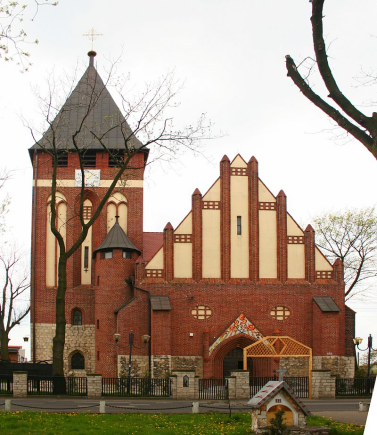
Parish Church of the Assumption of the Blessed Virgin Mary in Miasteczko Śląskie
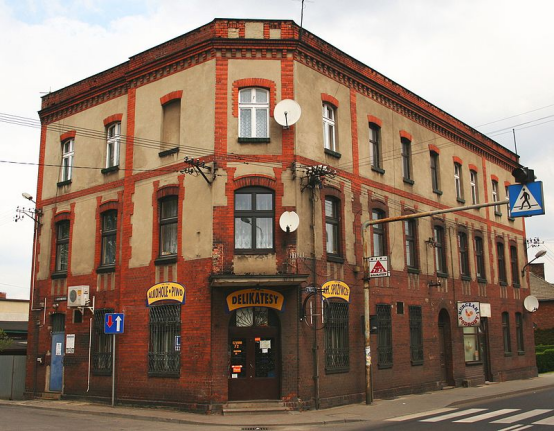
One of the tenement houses in the city center
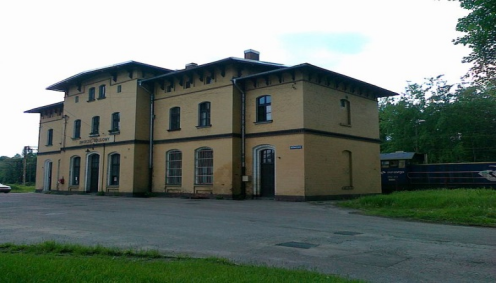
One of the tenement houses in the city center
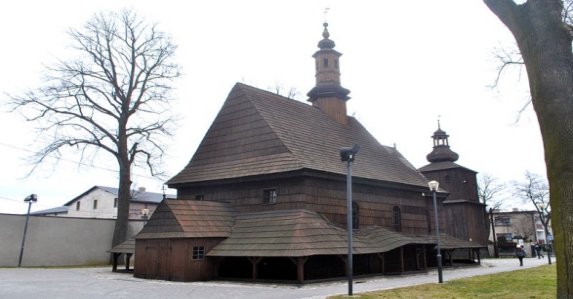
A branch church of Of the Assumption of the Blessed Virgin Mary and St. George in Miasteczko Śląskie
-A bicycle route and tourist routes run through the city:
-green hiking trail Centenary of Tourism Trail ,
-blue hiking trail Świerklaniecki Trail ,
-Yellow hiking trail The Upper Silesian Mining Trail.
-There are, among others, historic church of the Assumption of the Blessed Virgin Mary and St. George in Miasteczko Śląskie and the town hall. In the city there is the Orlik sports field complex and a sports hall at ul. Sportowa 1.
-Narrow-gauge railway
-From 1990, passenger and tourist transport was introduced on the Bytom - Miasteczko Śląskie section, and special passenger transport on the remaining sections. Górnośląskie Koleje Narrow-Gauge allows you to use the railway with a gauge of 785 mm, which ended 150 years in 2003.
-The Nakło-Chechło Lagoon
-A water reservoir located on the territory of the Świerklaniec commune near Miasteczko Śląskie, in the district of Tarnowskie Góry , in the province of Silesia . The lake has recreational functions. Around the lagoon there are numerous holiday centers and campsites, canoe, boat, pedal boat rentals, and walking routes. The lake is characterized by nice sandy beaches.
-Monuments
-Main article: Monuments of the Silesian Town .
-A branch church of Of the Assumption of the Blessed Virgin Mary and St. George in Miasteczko Śląskie
-The wooden church of St. George and the Assumption of the Blessed Virgin Mary with a bell tower from 1666, located at ul. Dworcowa 2 located on the Wooden Architecture Trail of the Silesian Voivodeship
-The urban layout of the old town buildings
-St. Mark in Żyglin (18th century)
-Manor granary from 1795 (renovated in 1965)
-Old Jewish cemetery (19th century)
Ⅵ.History and Culture
-Part of the text on the history of the Miasteczko Śląskie Commune has been prepared by Justyna Foks - an enthusiast of history and legends about Miasteczko Śląskie, a native resident of Miasteczko Śląskie.
-When writing the history of the creation of the Miasteczko Śląskie, one should start with a description of the neighboring Żyglin. According to Professor Nehring and the local population, the settlement of Żyglin dates back to 1065 or 1200, i.e. it is associated with the first centuries of Polish statehood. This land, located in the Bytom district and the Świerklaniec country, took its name from the no longer used verb "żglić", which means "burn out". In the Silesian dialect, instead of "żglić", it was pronounced "żglić", which in turn led to the creation of the name Żyglin, which is still used today. This name also indicates what the inhabitants of these areas did, because lead, silver or iron was smelted here, probably already in prehistoric times.
-In 1253, the first parish church in Żyglin was built, which, according to legend, was "founded by three Polish princes who, due to internal unrest and wars, were forced to leave their patrimony and seek shelter in the local wooded surroundings, which they also found on a hill where" the church was built. According to other sources, the foundation of this church is attributed to Piast, the Duke of Oleśnica, Konrad II (1338 / 1340-1403), and the lord of the divided Bytom land. In 1619 the church was desecrated and fell into the hands of Protestants. The situation did not change until February 22, 1632, when Count Lazarus Henckel von Donnersmarck returned the church to the Catholics. However, in 1700, due to the inattention of the church, it burned down, and in its place in 1703 a new wooden church was built, but three times smaller than the original. At that time, the provincial office of Żygliński comprised: Żyglin, Żyglińskie Góry (that is, the present Miasteczko Śląskie), Chechło, Boruszowiec, Nakło, Kuźnia, farm Bizja, Ostroźnica, castle Świerklaniec, farm and mill of Bibiel, Przejdros, Miotek, Kowoliki, Jędrysek, Zarach, Wymysłów and Horzeli mill. The church, brought to ruin in less than a hundred years, was decided to dismantle, while a new, more massive one was to be built in 1802. The new church, erected in 1842 and named the Nativity of NP Marja, still exists today. The parish school located next to the church existed here in the 16th century, while the government school was built in 1820. In 1885 the Żyglin commune had 657 inhabitants, and in 1926 - 693 inhabitants and 115 houses. The current population is around 2,000. At that time, the provincial office of Żyglin included: Żyglin, Żyglińskie Góry (that is, the present Miasteczko Śląskie), Chechło, Boruszowiec, Nakło, Kuźnia, farm Bizja, Ostroźnica, castle Świerklaniec, farm and Bibiel's mill, Przejdros, Miotek, Kowolika, Jędrysek, Zarach, Wymysłów Horzeli mill. The church, brought to ruin in less than a hundred years, was decided to dismantle, while a new, more massive one was to be built in 1802. The new church, erected in 1842 and named the Nativity of St. Mary, still exists today. The parish school located next to the church existed here in the 16th century, while the government school was built in 1820. In 1885 the Żyglin commune had 657 inhabitants, and in 1926 - 693 inhabitants and 115 houses. The current population is around 2,000. At that time, the provincial office of Żygliński comprised: Żyglin, Żyglińskie Góry (that is, the present Miasteczko Śląskie), Chechło, Boruszowiec, Nakło, Kuźnia, farm Bizja, Ostroźnica, castle Świerklaniec, farm and mill of Bibiel, Przejdros, Miotek, Kowoliki, Jędrysek, Zarach, Wymysłów and Horzeli mill. The church, brought to ruin in less than a hundred years, was decided to dismantle, while a new, more massive one was to be built in 1802. The new church, erected in 1842 and named the Nativity of NP Marja, still exists today. The parish school located next to the church existed here in the 16th century, while the government school was built in 1820. In 1885 the Żyglin commune had 657 inhabitants, and in 1926 - 693 inhabitants and 115 houses. The current population is around 2,000. Boruszowiec, Nakło, Kuźnia, Bizja farm, Ostroźnica, Świerklaniec castle, Bibiel's farm and mill, Sądros, Miotek, Kowoliki, Jędrysek, Zarach, Wymysłów and Horzeli's mill. The church, brought to ruin in less than a hundred years, was decided to dismantle, while a new, more massive one was to be built in 1802. The new church, erected in 1842 and named the Nativity of NP Marja, still exists today. The parish school located next to the church existed here in the 16th century, while the government school was built in 1820. In 1885 the Żyglin commune had 657 inhabitants, and in 1926 - 693 inhabitants and 115 houses. The current population is around 2,000. Boruszowiec, Nakło, Kuźnia, Bizja farm, Ostroźnica, Świerklaniec castle, Bibiel's farm and mill, Sądros, Miotek, Kowoliki, Jędrysek, Zarach, Wymysłów and Horzeli's mill. The church, brought to ruin in less than a hundred years, was decided to dismantle, while a new, more massive one was to be built in 1802. The new church, erected in 1842 and named the Nativity of St. Mary, still exists today. The parish school located next to the church existed here in the 16th century, while the government school was built in 1820. In 1885 the Żyglin commune had 657 inhabitants, and in 1926 - 693 inhabitants and 115 houses. The current population is around 2,000. The church, brought to ruin in less than a hundred years, was decided to dismantle, while a new, more massive one was to be built in 1802. The new church, erected in 1842 and named the Nativity of St. Mary, still exists today. The parish school located next to the church existed here in the 16th century, while the government school was built in 1820. In 1885 the Żyglin commune had 657 inhabitants, and in 1926 - 693 inhabitants and 115 houses. The current population is around 2,000. The church, brought to ruin in less than a hundred years, was decided to dismantle, while a new, more massive one was to be built in 1802. The new church, erected in 1842 and named the Nativity of St. Mary, still exists today. The parish school located next to the church existed here in the 16th century, while the government school was built in 1820. In 1885 the Żyglin commune had 657 inhabitants, and in 1926 - 693 inhabitants and 115 houses. The current population is around 2,000. In 1885 the Żyglin commune had 657 inhabitants, and in 1926 - 693 inhabitants and 115 houses. The current population is around 2,000. In 1885 the Żyglin commune had 657 inhabitants, and in 1926 - 693 inhabitants and 115 houses. The current population is around 2,000.
-The deposits of ores and ores discovered in the territory of the Žilina forests and the mining freedom granted in 1526 by Prince Jan Opolski for the extraction of these goods (the first act called the mining freedom privilege) attracted miners from all sides. It was here that in 1528 the famous Ordunek Gorny was issued, which is considered the first Polish mining law. In this way, in 1530, a small settlement was created, which was called "Żygliński Mountains" due to the numerous heaps that were formed, i.e. the mountains. In 1561, the settlement, which was rapidly developing thanks to mining, sent margrave Jerzy Fryderyk Brandenburczyk in Karniów to the lord of the Bytom-Tarnowskie Góry Land, asking him to grant the Żygliński Mountains town privileges. Thus, on April 23, 1561, these privileges were granted to:
-"By the grace of God, we, Jerzy Frederick Margrave of Brandenburg etc. We recognize and announce to everyone that many years ago a great treasure of lead and silver-bearing ores was discovered on our land near Żyglin, and there many people settled near this great mine, who asked us to grant their settlement the right of the city. Taking into account their request, we grant them and their descendants privileges of the city to the extent that other cities in Silesia have them, such that they will be ruled by the mayor, four councilors, the mayor (judge) and jurors appointed annually by our staroste of the Bytom Land . Because we have granted this settlement with city law on St. Knight George, we want this city to be called "Geörgenbergk" in the future. By Our grace, the coat of arms and the city seal attached and attached bears the image of St. George in white armor on a red background; st. Jerzy holds a spear, which he kills the dragon lying at his feet; Above the helmet, there is a helmet with white insets, and above the helmet, an eagle's thigh holding a black mining digger in its claws - the eagle's thigh with a digger is to appear in the reeve's seal, while the entire coat of arms is to be used by the mayor and the council. "
-However, the given name Geörgenbergk did not catch on among the people who called themselves "The Town". Currently, the name is Miasteczko Śląskie. In 1603, the town's population was approximately 350.
-In 1666, the inhabitants of Miasteczko built a wooden church, which is still in their dreams. It was consecrated on May 2, 1670 by the Krakow bishop, Mikołaj Oborski. In this church there is a miraculous painting of Our Lady of Sorrows, to which she was dedicated. In March 1823, the inhabitants of the town decided to move the parish from Żyglin to their more than a hundred-year-old wooden church, which was opposed by the owner of the land of Żyglin, because the area was then owned by the Henckel von Donnersmarck line from Świerklaniec-Tarnowskie Góry, and the town was owned by the Bytom-Siemianowice line. So the parish would be transferred to another owner. The church was still managed by the priests from Żyglin, and the town only received its own priests in 1849, and from 1914 it has its own rectory and is an independent parish.
-In 1826, a new school building was built on Dworcowa Street in Miasteczko. However, the railway arrived in 1883/84, when the station was also built. The first train passed through Geörgenbergk on July 1, 1884, initially it was the following routes: Tarnowskie Góry, Miasteczko, Kalety.
-Although the city had existed for several hundred years, it did not have its own town hall. It was not until 1900 that a house on the market square belonging to Rudolf Pringsheim was bought and the magistrate was placed there. This year, a volunteer fire brigade was established.
-From the 18th century, as a result of the impoverishment of the townspeople, which was caused by the exhausting source of ores in this area, the town completely lost its municipal rights. Ultimately, the exploitation of the ores ended on June 17, 1917. On that day, the mine in Pasieki was flooded, the remains of which, as a very interesting place for tourists and charming due to the rarity of rare nature, can be seen today by riding a bicycle route designated and prepared on the initiative of Mr. .
-At that time - after 1917, the town was losing its urban character. In 1920, however, the town chose its first Polish mayor, Jan Bondkowski, and at the same time he became the first Polish mayor in Silesia.
-After World War II (in 1946), the town completely lost its municipal rights until 1963. In 1963, however, industry returned to Miasteczko Śląskie. It was then that the construction of the zinc smelter began. The development of the city began. A housing estate for 2,500 inhabitants, a new school, kindergarten, a modern health center and a network of service facilities were built. Until the end of the 1970s, the smelter was expanded, but its harmful impact on the environment resulted in the imposition of a protection zone on a large area of Miasteczko Śląskie, Żyglin and Żyglinek, causing stagnation in economic development. Twelve years later, as a result of the administrative reform, on June 1, 1975, Miasteczko Śląskie became a district of Tarnowskie Góry. Only the socio-economic changes in the early 90's, created conditions for the development of entrepreneurship in the commune. After many efforts, Miasteczko Śląskie regained its city rights on January 1, 1995. The then elected City Council adopted the Study of the Conditions and Directions of Spatial Development, the aim of which was to make up for 20 years of neglect in the city's development and to raise the standard of living of its inhabitants. The operating zinc smelter liquidated the most onerous departments and intensified production, introducing modern technological processes, thus eliminating its harmful impact very significantly, which allowed for a significant reduction of the impact zone. Actions are still being carried out to maintain this state and to constantly improve and strengthen this situation. Further activities are planned in the coming years, which will contribute to a further improvement of the environmental impact situation. Several companies were established in the area of the closed steelworks (zones after the plant's impact). Service and commercial companies were also established throughout the commune. However, efforts should still be made to ensure that entrepreneurship continues to develop in order to attract potential investors and residents to the city. At present, the commune is organizing the formal and legal matters of the land, which is a priority activity at the moment. Pro-development activities are and will be continued, which is also reflected in the development of the Commune Development Strategy for the next 10 years of its existence. Service and trade companies were also established throughout the commune. However, efforts should still be made to ensure that entrepreneurship continues to develop in order to attract potential investors and residents to the city. At present, the commune is organizing the formal and legal matters of the land, which is a priority activity at the moment. Pro-development activities are and will be continued, which is also reflected in the development of the Commune Development Strategy for the next 10 years of its existence. Service and commercial companies were also established throughout the commune. However, efforts should still be made to ensure that entrepreneurship continues to develop in order to attract potential investors and residents to the city. At present, the commune is organizing the formal and legal matters of the land, which is a priority activity at the moment. Pro-development activities are and will be continued, which is also reflected in the development of the Commune Development Strategy for the next 10 years of its existence.
-A stone commemorating the swearing-in of the Polish Military Organization in 1919 has an interesting history, closely related to the history of the town. In its original shape, it was located in the forest, commemorating the victims of the Silesian uprisings. The insurgent chronicler noted that it was a natural stone weighing 2 tons. The inscription was carved on it: Związek Powstańców Śląskich 1937 - POW 1919. Below the inscription there is a picture of Our Lady of Częstochowa, and on the back there is a national emblem. The monument was unveiled in 1937. During World War II, the Germans ordered it to be completely destroyed. After the war, it was decided to commemorate the insurgent oath with a stone replica. Unfortunately, this place was located on the premises of the zinc smelter, which was under construction at that time. The stone was lying on the construction site for several months, and then he was accidentally pushed into the foundation pit of the workshop under construction. In 1996, a replica of a commemorative stone was unveiled in front of the entrance to the "Miasteczko Śląskie" zinc smelter. In addition to the mining ordinance and memorial stone, as well as the sunken mine, which is still waiting to be rediscovered, the Miasteczko Śląskie Commune hides many beautiful and interesting places and tourist attractions in its area.
Ⅶ.Other Information
-Miasteczko Śląskie is a small town in Silesia in southern Poland, near Katowice. Borders on the Upper Silesian Metropolitan Union - metropolis with the population of 2 million. Located in the Silesian Highlands.
-It is situated in the Silesian Voivodeship since its formation in 1999, previously in Katowice Voivodeship, and before then, of the Autonomous Silesian Voivodeship. Miasteczko Śląskie is one of the towns of the 2.7 million conurbations – Katowice urban area and within a greater Silesian metropolitan area populated by about 5,294,000 people. The population of the town is 7,437 (2019).
Ⅷ.Contact Information
Government
Mayor Michał Skrzydło
-ul. Rynek 8, 42-610 Miasteczko Śląskie
-phone: (+48) 32 393-80-00
-phone: (+48) 32 393-80-01
-fax: (+48) 32 393-80-02
-e-mail: um@miasteczko-slaskie.pl
